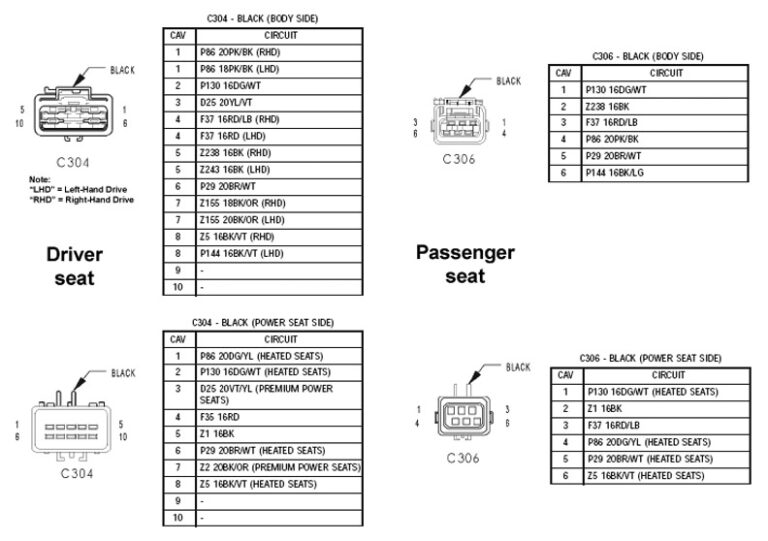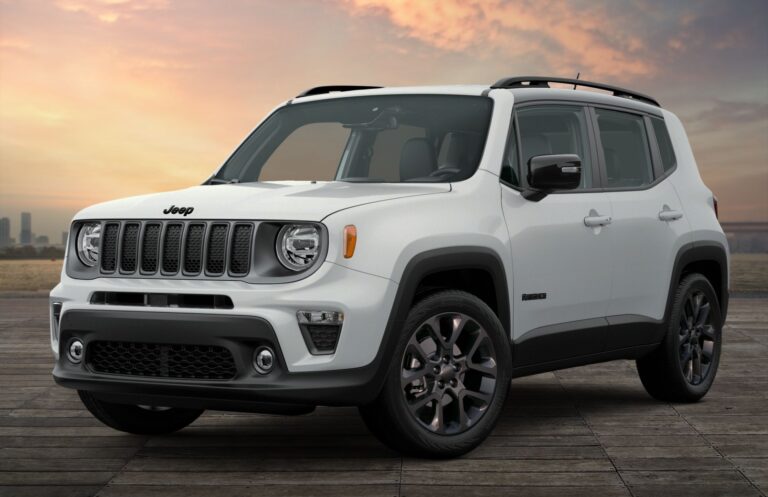1999 Jeep Sport For Sale: Your Ultimate Guide to Finding and Owning an XJ Legend
1999 Jeep Sport For Sale: Your Ultimate Guide to Finding and Owning an XJ Legend jeeps.truckstrend.com
The year 1999 stands as a pivotal point in automotive history, particularly for enthusiasts of rugged, dependable SUVs. Among the most iconic vehicles to roll off the assembly line that year was the Jeep Cherokee XJ, especially its "Sport" trim. More than just a used car, a 1999 Jeep Sport For Sale represents an opportunity to own a piece of off-road heritage, a versatile daily driver, and a canvas for endless adventure. This comprehensive guide aims to equip potential buyers with the knowledge, insights, and practical advice needed to navigate the market, make an informed purchase, and fully appreciate the enduring appeal of this legendary vehicle.
Why the 1999 Jeep Cherokee XJ Sport? The Enduring Appeal
1999 Jeep Sport For Sale: Your Ultimate Guide to Finding and Owning an XJ Legend
The Jeep Cherokee XJ, produced from 1984 to 2001, is often hailed as one of the most significant SUVs ever built. The 1999 model year, in particular, falls within the coveted "late model" XJ range (1997-2001) which benefits from various refinements while retaining the rugged simplicity and robust mechanics that made the XJ famous. The "Sport" trim level, while not the most luxurious, embodied the core spirit of the Cherokee: a no-nonsense, capable, and reliable vehicle designed for both urban commutes and challenging trails.
Its enduring appeal stems from several key factors:
- Legendary 4.0L Inline-Six Engine: The heart of the 1999 XJ Sport is the bulletproof 4.0-liter "PowerTech" inline-six engine. Renowned for its reliability, durability, and surprising torque, this engine is known to rack up hundreds of thousands of miles with proper maintenance, making it a highly desirable powerplant for a used vehicle.
- Robust Unibody Construction with Solid Axles: Unlike many modern SUVs, the XJ features a unibody design that’s surprisingly strong and lightweight for its capabilities, combined with solid front and rear axles (Dana 30 front, Chrysler 8.25 or Dana 35 rear). This combination provides superior articulation and durability off-road, a significant advantage over independent suspension setups.
- Compact Size, Expansive Capability: The XJ strikes a perfect balance between being small enough for city parking and nimble enough for tight trails, yet spacious enough to carry passengers and gear. Its relatively narrow width is a huge asset on overgrown trails.
- Vast Aftermarket Support: The XJ enjoys one of the largest and most vibrant aftermarket communities in the automotive world. This means parts are readily available, modifications are plentiful, and there’s a wealth of knowledge to tap into for repairs, upgrades, and general maintenance.
- Classic Aesthetics: With its iconic boxy shape, the XJ possesses a timeless design that continues to turn heads and resonate with classic SUV enthusiasts.

For someone seeking a capable, versatile, and relatively simple vehicle that holds its value and offers immense customization potential, a 1999 Jeep Sport For Sale is an incredibly compelling option.
What to Look For: Key Inspection Points Before Buying
Purchasing a 25-year-old vehicle, even one as robust as the XJ, requires a thorough inspection. While the 4.0L engine is incredibly reliable, other components will show wear and tear. Here’s a detailed checklist of what to scrutinize:
- Rust, Rust, Rust: This is often the biggest enemy of older XJs.
- Unibody Frame Rails: Check thoroughly under the vehicle, especially where the control arms mount. Look for bubbling, flaking, or holes. Repairing unibody rust can be costly and complex.
- Floorboards and Rocker Panels: Lift carpets, particularly in the footwells, to check for rust. Inspect the exterior rocker panels for rot.
- Rear Quarter Panels: Check around the wheel wells and under the rear bumper for common rust spots.
- Door Sills and Hatch Area: Don’t forget these often-overlooked areas.
- Engine (4.0L I6):
- Oil Leaks: Common areas include the valve cover gasket (top of the engine), rear main seal (where the engine meets the transmission), and oil filter adapter. While some leaks are minor, significant ones can indicate neglect.
- Cooling System: Check the radiator (look for leaks or green/brown residue), water pump, thermostat housing, and hoses. Overheating is a common XJ issue if the cooling system isn’t maintained. Ensure the electric fan kicks on when AC is on or engine temperature rises.
- "Death Wobble" (Steering/Suspension): A violent, uncontrollable shaking of the front end, usually triggered by hitting a bump at speed. This is almost always caused by worn steering or suspension components (track bar, tie rod ends, ball joints, control arm bushings). Test drive for this.
- Check Engine Light: Always ask why it’s on. Use an OBD-II scanner to pull codes.
- Transmission (AW4 Automatic or AX-15 Manual):
- Automatic (AW4): Known for reliability. Check fluid color (should be red, not brown or burnt-smelling). Listen for harsh shifts or slipping during a test drive.
- Manual (AX-15): Also robust. Check clutch engagement, listen for grinding noises, and ensure smooth shifting through all gears.
- Transfer Case (NP231 or NP242):
- Engage 4WD High and Low. Listen for grinding or clunking noises. Ensure it shifts smoothly into and out of all positions. Check for fluid leaks around the seals.
- Suspension and Brakes:
- Look for sag, especially in the rear leaf springs. Check shocks for leaks.
- Inspect brake lines for rust or damage. Test the brakes for spongy feel or pulling.
- Electrical: Test all lights, windows, wipers, radio, and HVAC system. Ensure the blower motor works on all settings.

Practical Advice: Always arrange for a pre-purchase inspection (PPI) by a trusted mechanic familiar with Jeeps if you’re not confident in your own assessment. A few hundred dollars spent on a PPI can save you thousands down the road.
Common Modifications and Aftermarket Support
One of the greatest joys of owning a 1999 Jeep Sport is the sheer volume of aftermarket parts and modifications available. This means you can tailor your XJ to your specific needs, whether it’s enhanced off-road capability, improved daily drivability, or a unique aesthetic.
- Lift Kits: Ranging from mild 2-inch boosts for larger tires to extreme 6.5-inch setups for serious rock crawling, lift kits are the most common modification. They increase ground clearance and allow for larger tires, improving off-road performance.
- Tires: Upgrading to all-terrain (AT) or mud-terrain (MT) tires significantly enhances traction and durability off-road. Common sizes include 30-33 inches.
- Bumpers and Armor: Aftermarket steel bumpers offer better protection, recovery points, and often accommodate winches. Skid plates and rock sliders protect vital undercarriage components.
- Recovery Gear: Winches, recovery straps, and shackles are essential for off-road adventures and can be easily mounted.
- Drivetrain Upgrades: For hardcore off-roaders, this might include re-gearing axles for larger tires, adding locker differentials for improved traction, or upgrading axle shafts.
- Interior Upgrades: From improved seating to better stereo systems and auxiliary lighting controls, the interior can be customized for comfort and functionality.
Challenges and Solutions: While modifications are fun, they require careful consideration.
- Budgeting: Mods can quickly add up. Prioritize what’s essential for your use case.
- Quality: Not all aftermarket parts are created equal. Research reputable brands and read reviews.
- Installation: Some modifications require professional installation, adding to the cost.
- Legality: Be aware of local laws regarding lift heights, tire sizes, and bumper regulations.
Understanding Trim Levels and Options (1999 XJ Sport Specifics)
In 1999, the Jeep Cherokee XJ was offered in several trim levels, with the "Sport" being one of the most popular, striking a balance between basic utility and comfortable features.
The 1999 Jeep Cherokee Sport typically came with:
- The standard 4.0L inline-six engine.
- Choice of AW4 automatic or AX-15 manual transmission (manuals are rarer).
- Part-time Command-Trac (NP231) 4WD system, or the full-time Selec-Trac (NP242) as an option.
- Standard cloth interior, often with manual windows and door locks, emphasizing its no-frills, utilitarian nature.
- Basic gauge cluster.
- Steel wheels or basic alloy wheels.
- Air conditioning and a stereo were often optional but commonly found.
- The Sport trim was essentially the workhorse, providing solid mechanicals without the added frills or weight of higher trims like the Limited or Classic. This simplicity is often preferred by enthusiasts who plan to modify their vehicle.
When looking at a specific 1999 Jeep Sport For Sale, pay attention to the options it was built with, as these can significantly impact its value and your enjoyment. For example, a vehicle with the full-time Selec-Trac transfer case (NP242) offers more versatility for varied driving conditions.
The Buying Process: Tips for a Smooth Transaction
Finding the right 1999 Jeep Sport For Sale requires patience and diligence. Here’s how to navigate the buying process:
- Set Your Budget: Determine not just the purchase price, but also funds for immediate maintenance, potential repairs, and insurance. Older vehicles will always have ongoing costs.
- Research Listings:
- Online Marketplaces: Craigslist, Facebook Marketplace, eBay Motors, AutoTrader, and dedicated Jeep forums are excellent sources.
- Local Dealerships: Less common for XJs of this age, but worth checking.
- Word of Mouth: Sometimes the best deals are found through friends or local car communities.
- Prioritize Condition Over Mileage: While lower mileage is generally better, an XJ with 200,000 miles that has been meticulously maintained and regularly serviced is often a better buy than one with 120,000 miles that has been neglected and abused.
- Ask Detailed Questions: Before you even see the vehicle, ask about:
- Maintenance history (receipts are gold).
- Any known issues or recent repairs.
- Rust situation.
- Modifications made.
- Reason for selling.
- Test Drive Thoroughly:
- Listen for unusual noises from the engine, transmission, and suspension.
- Test brakes (no pulling, shuddering).
- Check steering (no excessive play, no "death wobble").
- Test all gears, including 4WD High and Low.
- Drive at various speeds, including highway speeds if possible.
- Verify Documentation: Ensure the seller has a clear title in their name and that the VIN on the title matches the VIN on the vehicle. Be wary of salvage titles or lien issues.
- Negotiate Respectfully: Be prepared to negotiate based on your inspection findings. Don’t be afraid to walk away if the deal doesn’t feel right.
Price Table: 1999 Jeep Cherokee Sport For Sale (Estimated Ranges)
Please note that these are estimated ranges and actual prices can vary significantly based on location, seller, specific options, and the urgency of the sale.
| Condition Category | Estimated Price Range (USD) | Key Characteristics |
|---|---|---|
| Project/Parts Car | $500 – $2,500 | Significant rust, major mechanical issues, non-running, salvage title. For experienced DIYers or parts harvesting. |
| Fair/Driver Quality | $2,500 – $6,000 | Visible rust, dents/scratches, higher mileage (180k+), some deferred maintenance needed, but generally runs and drives. |
| Good/Solid Daily | $6,000 – $10,000 | Minor rust, decent interior, well-maintained engine/transmission, moderate mileage (120k-180k), may have minor mods. |
| Excellent/Collector | $10,000 – $20,000+ | Minimal to no rust, pristine interior/exterior, low mileage (<100k), meticulously maintained, original or tastefully modded. |
Frequently Asked Questions (FAQ) about the 1999 Jeep Sport
Q1: How reliable is the 1999 Jeep Cherokee Sport?
A1: Very reliable, primarily due to its robust 4.0L inline-six engine and durable drivetrain. With regular maintenance, these vehicles are known to last for hundreds of thousands of miles. The primary concerns for reliability in older XJs typically revolve around rust and neglected cooling systems.
Q2: What’s the typical fuel economy for a 1999 Jeep Sport?
A2: Expect around 15-18 MPG combined. Highway mileage might creep into the low 20s, but city driving and off-roading will be significantly lower. It’s not known for its fuel efficiency.
Q3: Are parts still available for the 1999 XJ?
A3: Absolutely. Due to its popularity and long production run, aftermarket support is excellent, and many OEM replacement parts are still available. You’ll have no trouble finding parts for repairs or modifications.
Q4: Is the 1999 Jeep Sport good for off-roading?
A4: Yes, it’s exceptionally capable right out of the box, and even more so with minor modifications like a lift and larger tires. Its solid axles, short wheelbase, and capable 4WD system make it a legendary off-roader.
Q5: What’s the difference between the NP231 and NP242 transfer cases?
A5: The NP231 (Command-Trac) is a part-time 4WD system, meaning you can only use 4WD on loose surfaces (like dirt, snow, or sand) to prevent drivetrain binding. The NP242 (Selec-Trac) offers both part-time 4WD and a "Full-Time 4WD" mode that can be used on pavement, making it more versatile for varied conditions.
Q6: What are the most common maintenance items for a 1999 XJ?
A6: Regular oil changes, cooling system flushes, transmission and transfer case fluid changes, and lubrication of steering and suspension components. Addressing cooling system issues (fan clutch, radiator, water pump) proactively is crucial.
Q7: Is the 1999 XJ a good daily driver?
A7: For many, yes. It’s relatively comfortable, maneuverable, and reliable. However, it lacks modern amenities, safety features, and fuel economy. Its boxy shape provides good visibility.
Conclusion
The 1999 Jeep Sport For Sale market offers a unique opportunity to acquire a vehicle that embodies durability, capability, and a strong sense of community. Far from being just an old SUV, the XJ Sport is a testament to timeless design and engineering, offering a blend of rugged utility and surprising daily drivability. Whether you’re an aspiring off-roader, a classic SUV enthusiast, or simply seeking a dependable and modifiable vehicle, the 1999 Jeep Cherokee Sport stands as an excellent choice. By understanding its strengths, knowing what to look for during inspection, and embracing the vibrant aftermarket, you can confidently embark on the rewarding journey of owning and enjoying this legendary Jeep. The adventure truly begins when you turn the key on your own piece of XJ history.






